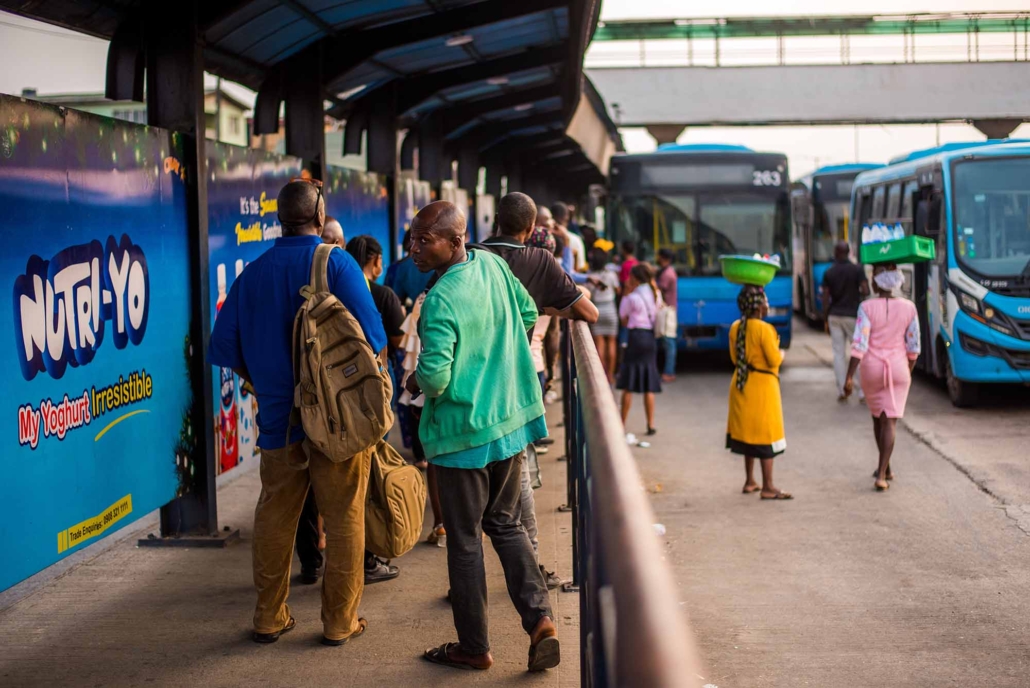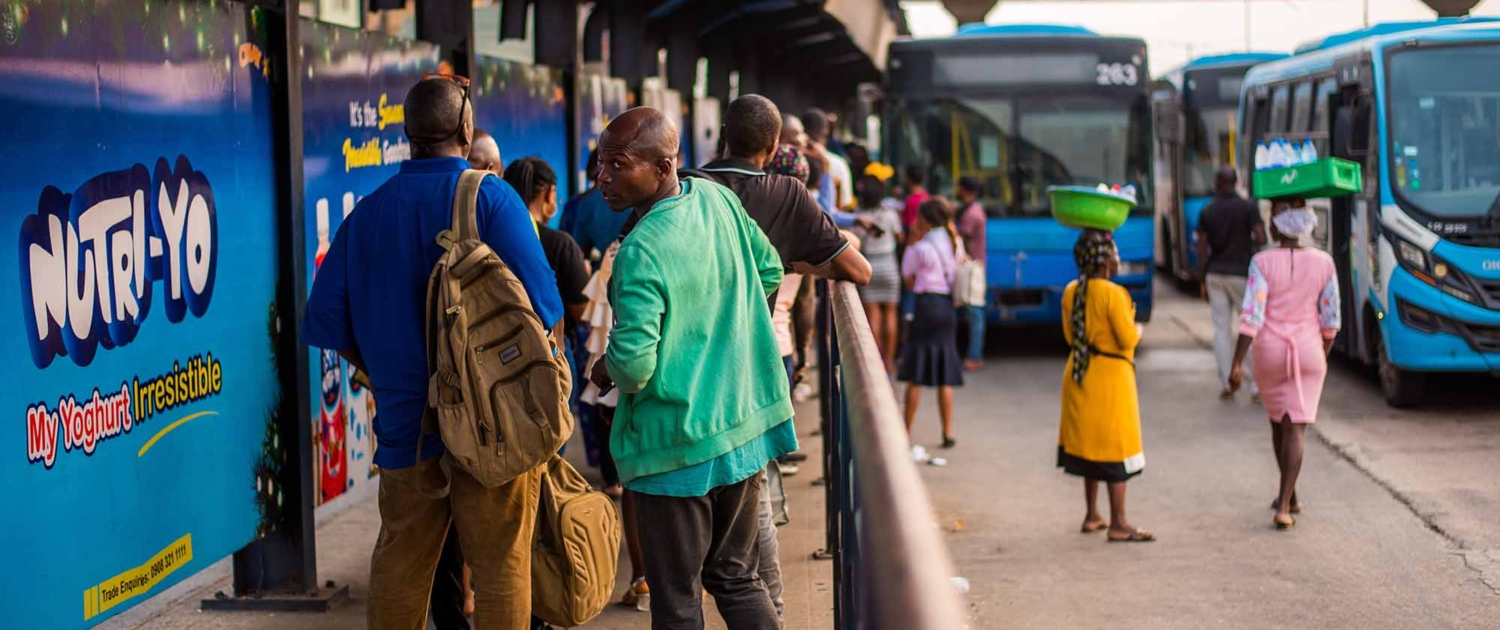Introduction to the Bus Rapid Transit (BRT) System
The Lagos Bus Rapid Transit (BRT) system was introduced in 2008 as part of an urban planning initiative aimed at improving public transportation and enhancing the quality of life for the urban poor in Lagos, Nigeria. The BRT is the first in sub-Saharan Africa and aims to provide an affordable, reliable, and efficient mode of transport for the city’s growing population. This case study explores how the BRT system is improving the quality of life for Lagos residents, particularly the urban poor.

People queue for a bus on the Lagos BRT System
Challenges in Lagos
Lagos, with a population of over 20 million, faces significant challenges related to urban mobility. The city suffers from severe traffic congestion, pollution, and inadequate public transportation options. These issues disproportionately affect the urban poor, who often spend much of their income and time commuting. The lack of reliable public transportation also limits many residents’ access to job opportunities, education, and healthcare services.
Urban Planning Strategies: The BRT System
To address these challenges, the Lagos State Government, in collaboration with private partners and international organizations like the World Bank, launched the BRT system in 2008. The key features of the BRT system include:
- Dedicated Bus Lanes: The BRT operates on dedicated lanes, allowing buses to bypass traffic congestion and provide faster, more reliable service than traditional public transport.
- Affordable Fares: The BRT system offers affordable fares, making it accessible to low-income residents who rely on public transportation for their daily commute.
- Public-Private Partnership: The BRT system is operated through a public-private partnership, with private operators running the buses while the government provides infrastructure and regulatory oversight.
How the BRT System Has Improved Quality of Life
The introduction of the BRT system has led to several improvements in the quality of life for Lagos residents, particularly the urban poor:
Economic Benefits
- Reduced Travel Costs: The BRT system’s affordable fares have reduced the financial burden of commuting for low-income residents. According to a World Bank report, commuters using the BRT save up to 30% on transportation costs compared to other public transport options.
- Access to Employment: The improved reliability of the BRT has made it easier for residents to access job opportunities, especially those living in underserved areas. This has contributed to increased economic activity and income generation for many families.
Social Benefits
- Improved Access to Services: The BRT system has improved access to essential services such as healthcare and education by providing reliable transportation. This has particularly benefited the urban poor, who often face barriers to accessing these services due to unreliable transport.
- Reduced Travel Time: The dedicated lanes of the BRT system have significantly reduced travel times, allowing commuters to spend less time in traffic and more time with their families or engaging in productive activities.
Environmental Benefits
- Reduced Air Pollution: By encouraging more people to use public transport instead of private cars or informal minibuses, the BRT system has helped reduce the number of vehicles on the road, leading to lower emissions and improved air quality in Lagos.
Conclusion
The Lagos BRT system is an example of how urban planning can improve the quality of life for the urban poor by addressing key challenges related to transportation. Through affordable fares, reduced travel times, and improved access to services, the BRT system has positively impacted the lives of many Lagos residents. However, continued investment in expanding and maintaining the BRT network will be crucial to ensure that the benefits reach even more people in the future.
Related Topics
Use the images below to explore related GeoTopics.



